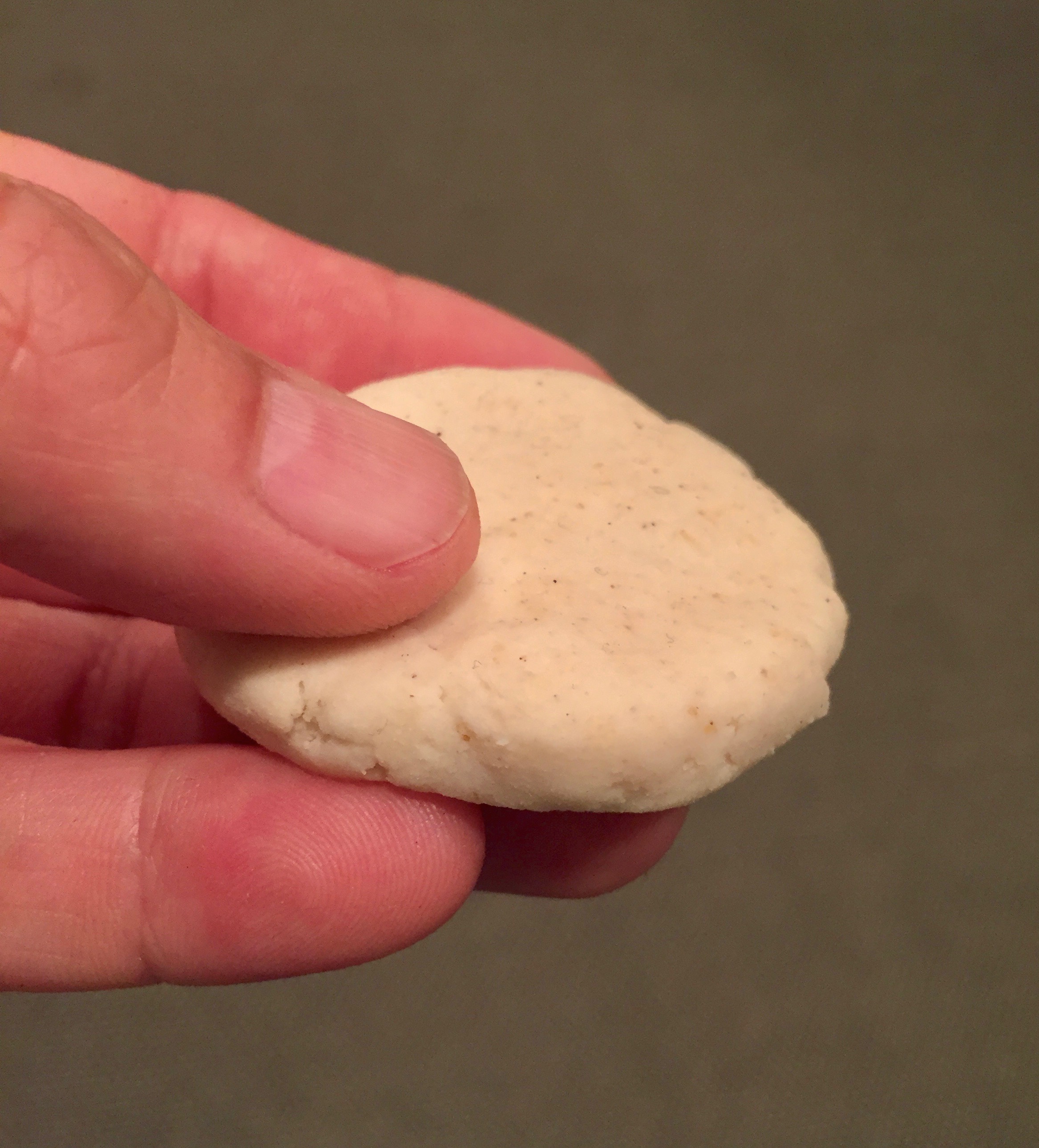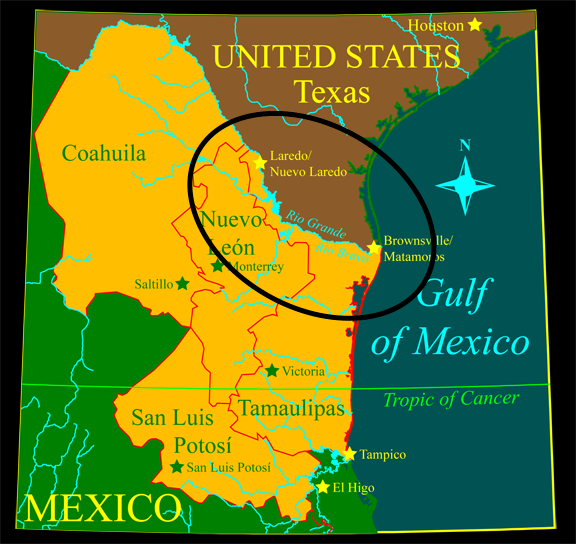Nopalitos Shrimp Gorditas – Cactus Is Perfect Party Dish

Nopalitos shrimp gorditas evoke two very different landscapes of the Texas-Mexico food region: the Gulf coast and the semi-dessert. The map shows the region of south Texas/northern Coahuila, Nuevo Leon, Tamaulipas sharing the Gulf of Mexico. It remains a cohesive culinary region, sharing the same natural environment. But the present day semi-dessert of south Texas and northeastern Mexico was not always so.

When I make these cactus gorditas, I’m reminded that humans change the land in big ways.
The land we know today as southern Texas and northeastern Mexico is different from what it was three hundred years ago, before dramatic changes brought about by the arrival of Spaniards from the south and later the Anglo-Europeans from the east. Today it is overrun by mesquite, prickly pear cactus, and thorny wild brush, previously found only in certain areas. Cattle, sheep, goats, and other new animals came so fast and there were so many of them, that they devastated the grasslands of the original prairies and savannahs.
As they moved, these animals spread the seeds of mesquite and thorn-covered brush species that use greater amounts of water than grasses. The results are the invasion of most of the land by thick wild brush and the reduction of natural springs, creeks, and general water levels (Hall, 2006).
Remembering how things were is not a nostalgic yearning to return. It is a history lesson pointing to consequences of the choices we make about food production and distribution. To me, it is a reminder to pay attention. Cooking is remembering.
Nopalitos Shrimp Gorditas | Cactus and Shrimp Gorditas
Recipe adapted from the cookbook, “Truly Texas Mexican: A Native Culinary Heritage In Recipes”
Ingredients (makes 25 small gorditas or 50 halves)

1 cup fresh shrimp, heads off, peeled, deveined, and cut into 1/2-inch pieces
1 cup fresh nopales (cactus paddles), 1/4-inch squares (To remove spines from the cactus, cover your working surface with newspaper. Use tongs to hold the cactus paddle with one hand and peel the spines off with the other hand using a potato peeler. Keep the debris and spines away from any gusts of air, as some spines are so fine that they become airborne. When finished, roll up the newspaper carefully and discard.)
1/4 cup white onion, small dice
1/8 teaspoon salt or to taste
1/4 cup water
1 tablespoon canola oil
1/2 cup cilantro, cut very fine
1/4 pound queso fresco
For the Gorditas
1 pound corn flour (masa harina, not corn meal, which is too coarse)
2-1/2 cups water
2 teaspoons salt
1/2 cup canola oil
For the Chile Paste
1 garlic clove
3 ancho chiles, cleaned, seeded, and deveined
3 guajillo chiles, cleaned, seeded, and deveined
1/2 teaspoon ground cumin
3/4 cup water
1 tablespoon canola oil
1 teaspoon salt or to taste

Method
For the Gorditas
1. Combine the corn flour, salt, oil, and water in a bowl to make a soft, moist masa. It should be easily pliable. Add more water if needed. Cover with a damp cloth and let stand for 20 minutes.
2. Form the dough into 25 small balls, and then flatten them to half-inch thickness.
3. Place the gorditas on 375°F griddle or comal. After 2 minutes flip them and cook the other side also for 2 minutes. Now that both sides are nice and crunchy, just let each side cook for another 2–3 minutes until the gorditas are golden.
For the Chile Paste (same as for tamales)
4. To devein the chiles, first lay the chile flat on a cutting board and, using a paring knife, cut a slit lengthwise. Grab the chile with one hand and with the other remove the stem along with the bunch of seeds still attached to it. Open the chile along the slit and remove the remaining seeds and veins.
5. In a large saucepan, cover the cleaned chiles with water and bring to a boil. Turn off the heat and let the chiles steep for 15 minutes so that they rehydrate and become tender.
6. Drain the chiles, discarding the water. Let the chiles cool a bit, and then place the chiles in a blender along with the garlic, cumin, and salt. Blend to a very fine paste, adding 1/2–1 cup water as needed.
For the Shrimp and Nopalitos
7. Heat the oil in a skillet on medium heat, and cook the cactus squares for 13–15 minutes. Add the onion and cook 2 minutes, stirring. Add 1/3 cup chile paste, 1/4 cup water, and combine well. Cover and cook on low for 5 minutes.
8. Add the shrimp, combine well, cover, and cook for 3 minutes, and then turn off the heat. They are ready to be served.
To Assemble
9. Using a sharp knife and a cutting board, slice each gordita along the middle, making two separate disks and lay each disk flat on a serving tray, golden side down.
10. Place 1/2 tablespoon of the cactus and shrimp mixture on each disk, and then top with a light sprinkle of queso fresco. Finish by adding just a bit of color andaroma with the freshly cut cilantro leaves.

Reference:
Hall, G. D. (2006). “Hunter-Gatherer Life along the Frio River in the South Texas Brush Country.” Retrieved from http://www.texasbeyondhistory.net/choke/index.html.
